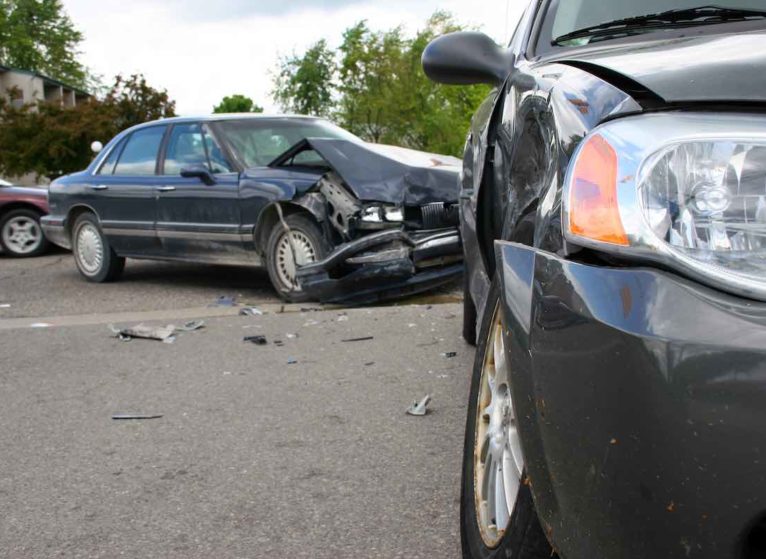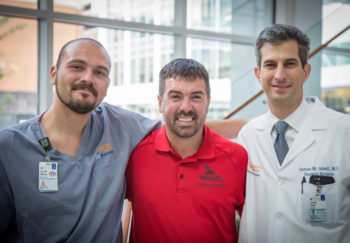We hear a lot about car crashes. Every year, 32,000 people die because of crashes, according to the Centers for Disease Control and Prevention. Another 2 million are injured. We're designing cars to be safer with new features and better airbags, but you may still experience physical and mental trauma.
Gen Z and Millennials are more likely to be in a crash than other age groups. So while heart attacks and cancer kill more people in the U.S., fatal car crashes lead to more years of life lost.
What to Expect After a Crash
After a crash, you or someone else might call the local emergency services. Police and emergency medical service (EMS) members will arrive shortly. Shawn M. Reid, a flight nurse with UVA’s medevac helicopter Pegasus, explains that upon arrival, EMS will assess the scene for potential hazards, such as:
- Oncoming traffic
- Downed power lines
- Fuel or chemical spills
They’ll put safety measures into place to stabilize the vehicle(s) and avoid unintentional movement during extrication. If a patient is trapped, EMS will work as a team with fire agencies.
In the first few minutes, the EMS provider will ask several questions to help decide what kind of treatment you need. They are trying to determine the likelihood that you have internal or severe injuries. If that's the case, you'll be transported to an emergency room (ER).
Safe driving tip: If you're in a motor vehicle crash, stay in your vehicle unless you or your passenger(s) are in danger. Turn off the vehicle. Pay attention to broken glass or sharp objects inside the vehicle to avoid more injuries.
Getting You to Better Care
Considering the best mode of transportation, such as air medical services versus ground transport, is very important. Considerations are based on the need for time-sensitive care for those critically-ill trauma patients. Also, the location of the nearest appropriate facility capable of providing the care is also considered when determining the mode of transportation.
Patients in need of air medical services: has lost a significant amount of blood or airway is blocked. Crew members of UVA Pegasus can assist with this on the way to the hospital.
You might also require an immobilization device, such as a cervical collar, a backboard, or straps, to keep you safe during transport. These may be a little uncomfortable, but they prevent any damage to your spinal cord in the event you have a spine fracture. During this time, the EMS provider will continue to ask you questions before arriving at the hospital.
At the Hospital
Once at the hospital, the EMS provider will report to the emergency room (ER) team, such as doctors, nurses, and other staff. The care team will move you from the EMS stretcher to a hospital bed. They’ll continue their assessment and run tests to decide your best treatment. If there are any injuries to your internal organs, a major brain injury, or broken bones, you may require hospital admission and possible operation.
If you have minor injuries, you’ll go home to rest and follow up with your primary care provider within 2-3 days. It's common for patient to not remember details about their emergency department visit and instructions from the doctor, so all the details will be on your discharge papers. This includes what tests were done, any medications, and instructions for at-home care. At UVA, if a family member can't be with you in the ER due to COVID, your doctor can talk to them over the phone to explain everything.
If your pain continues to get worse, then you should go back to the ER for re-evaluation.
Safe driving tip: Your cell phone may have an emergency family setting that alerts a designated person if someone calls 911. In the chaos of a crash, you might not have time to call a loved one.
Common Car Crash Injuries
Thomas Hartka, MD, is an emergency department doctor who studies car crashes. He finds that your risk of injury depends on your age, your health, and the type of crash. Hartka shares that he sees a lot of:
- Rib fractures
- Head injuries
- Bleeding in the brain
- Bone fractures
- Organ damage — bowel, liver, and kidney damage tend to be more common
Older adults are at the highest risk for serious injuries or fatalities.
Driving Dangers
As cars have added safety features like airbags, the National Highway Traffic Safety Administration (NHTSA) noted a decrease in deaths. But around 2015, numbers began to increase due to cell phones and distracted drivers. As states create laws against distracted driving, numbers are slowly decreasing.
Safe driving tip: Newer phones and cars can auto-respond and let the person texting you know that you’re driving.
Hartka and others have noticed a decrease in crashes as COVID-19 forces people to stay home. He also thinks it could be because bars and restaurants closed earlier than normal.
Motorcycles
Cars and trucks are getting safer each year, but there's not much we can do to make a motorcycle safer. You’re 30 times more likely to die on a motorcycle than in a car, especially if speed or a car is involved in the crash.
Pedestrians and Bicyclists
Pedestrians and bicyclists are also at high risk for serious injuries or death from a crash.
The CDC recommends that pedestrians:
- Increase visibility with bright colored-clothing, reflectors, and flashlights at night
- Cross the street in designated areas
- Walk on the sidewalk or a path and face oncoming traffic
For bicyclists, the NHTSA recommends:
- Drive with traffic
- Just like a car, follow all the signs and signals
- Assume the other person doesn't see you
Safe driving tip: Try the Dutch Reach — when getting out of your car when you're parked on a street, use your hand furthest away from the door. This forces you to move your body into a position where you can see oncoming traffic, pedestrians, or bicyclists.
Support After a Crash
We offer resources to help after a crash with a monthly support group. You can connect with other survivors who have faced similar challenges.
Reaction Times
Unfortunately, our reaction time peaks between 20-30 years old. However, older people tend to drive slower and more cautiously.
The more you drive, the more you become a better and safer driver. Hartka stresses that when you don't use it, you lose it. People who aren't driving daily anymore are losing a little of their skill set and reaction times. Be cautious if you’re back on the road again after a break from driving.
Kids and Teens
Unintentional injuries are the leading cause of death for kids. It's important to keep your little ones safe while driving. Follow the most up-to-date car safety recommendations.
According to the CDC, drivers between ages 16 and 19 are three times more likely to get in a fatal crash. The graduated driver licensing program helps them practice driving in different situations before driving by themselves.
Safe driving tip: Don't give your kids the old, beat-up vehicle. Hartka instead recommends reviewing the safety ratings and getting something that will protect them in a crash.
The Future of Driving
Did you know that the Insurance Institute for Highway Safety tests vehicle safety right here in Ruckersville, VA? They crash cars every week to help manufacturers make their vehicles safer. When you are thinking about buying a new vehicle, check out their safety ratings.
We don’t have enough research yet on new features like automatic braking and lane-departure signals. But insurance data shows better driving and a decrease in the severity of crashes.
Newer cars also have a little black box, similar to ones you may hear about in airplane and helicopter crashes. This device records what happens during a crash, such as speed, braking, seat belt safety, and more. You may have heard about Tiger Wood's recent crash and the role of his black box in the investigation.
Hartka asks, "How could this data in the black box be shared with the emergency department physicians to better improve care for patients after a car crash?"
Self-Driving Cars
In the near future, we may see only self-driving cars on the roads. Does that mean they’re safer? Hartka believes so. “As humans, we were never evolved to drive as our attention can be on the wrong thing at the wrong time.”
In the meantime, we must continue to practice safe driving and stay focused on the road.


